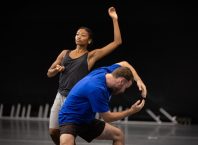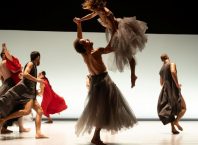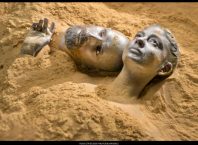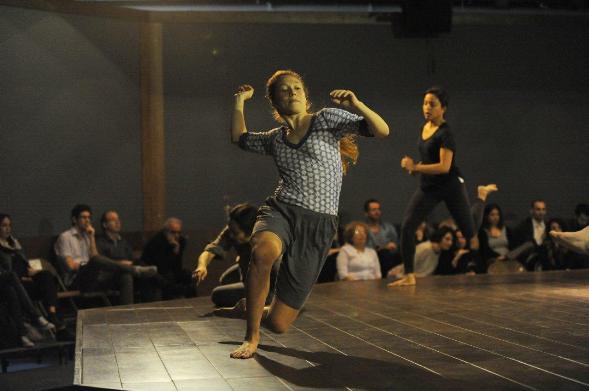
Ohad Naharin’s new work The Hole, redefines the dance space and plunges the viewer into a world of images and sensations, conjuring associations from Courtney Love to philosophical musings, Yeat’s Crazy Jane and Carrol’s Alice. Premiering in the Batsheva Dance Company’s Varda Studio, Naharin invites the audience to sit within an octagon, around an octagonal stage, with a performance that utilizes every inch of the space and imagination.
“We believe that the whole is greater than the sum of its parts,” said Naharin, “so we’ll break up the parts to show some of the components of movement,” as he invited members of the press and other fortunate people to view fragments of the work in progress. Without giving away two much, the dance is performed by two groups of dancers, one entirely male and one female. The Hole will be presented in two versions, with the casts switching roles. Does gender have an impact on the work’s effect and meaning? That is something that Naharin plans to explore in the first weeks of The Hole’s performances.
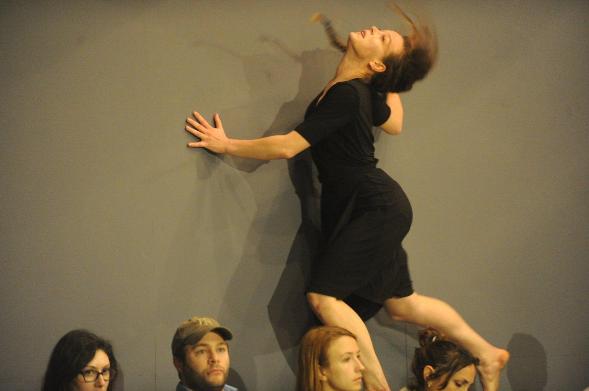
“The Hole is a name that I like very much in relation to the process of creating this work,” said Naharin when asked about the work’s very suggestive name, “I think that when you meet someone, that person has a name and you might try to find reasons for the name, or you might not connect the name to anything beyond the person. You are invited to do the same here.”
A decade ago Naharin invited the public into the studio with Mamootot, a work that took place on the studio floor, with the audience positioned around all four walls. “I wanted to create once more from a perspective that is not frontal,” said Naharin, “and I didn’t want to create a circle. There is something very symmetric about an octagon. In Gaga (Naharin’s movement language with which he works with the dancers) we are aware that symmetry is an illusion. When you work from the right and then repeat the movement from the left, it will never be symmetrical.”
In any Batsheva performance, the power and intensity is exhilarating. The dancers are immensely talented, each with a strong individual presence onstage. Their rapport with one another, and with Naharin, contributes to the intimacy and intensity of the work.

